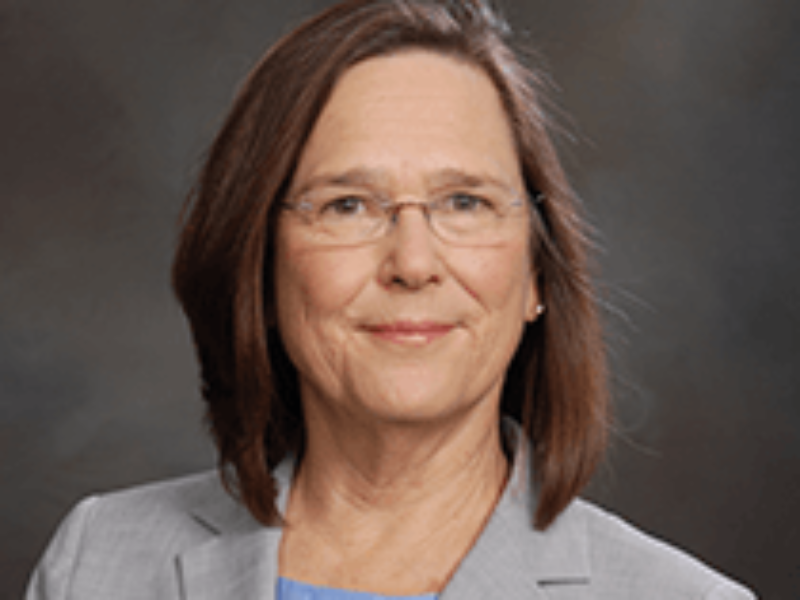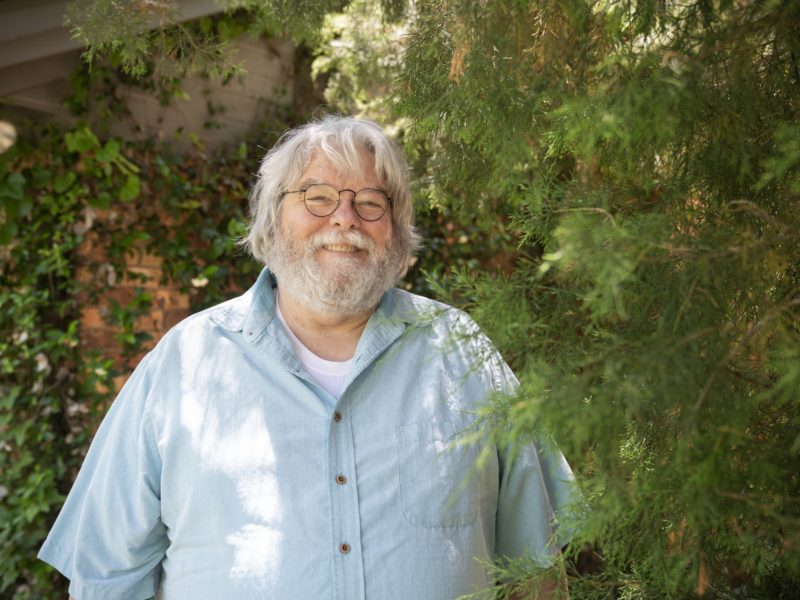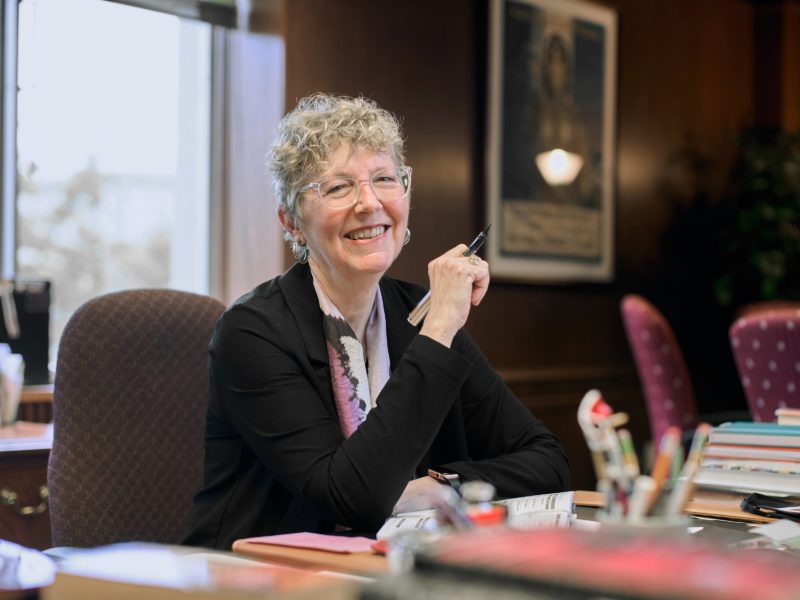Bush School Professor Retires With Many Stories To Tell, More He Won’t
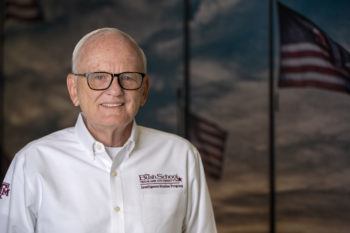
Texas A&M University Professor Jim Olson says he had a strained relationship with his father-in-law for several decades.
After studying math and economics in his home state at the University of Iowa, Olson served in the Navy and earned a law degree, planning to become a small-town attorney.
But that never happened.
Over the years Olson’s father-in-law, himself an attorney in Washington state, noticed the family moved around a lot and his daughter’s husband seemed unable to hold a job for very long.
“He was worried about my ability to support his daughter and three grandchildren; he thought I was a loser,” Olson said. “One day he pulled me aside and said, ‘I don’t want to interfere with your business, but I just want you to know if you ever need a job, you have one here in our law firm.’ I thanked him but declined the offer.”
What his father-in-law didn’t know was that Olson and his wife Meredith both worked for the Central Intelligence Agency (CIA). “When he finally found out, he was very relieved,” Olson recalled, “and we were great friends after that.”
As a husband-and-wife spy team, the Olsons raised their children mostly overseas, conducting espionage and covert action missions for more than 30 years, including on Russian soil during the Cold War.
After many missions, they decided it was time to move on to other careers. Meredith became a registered nurse, and for Jim, it was on to Texas A&M’s Bush School of Government and Public Service, where he spent 25 years educating the next generation of intelligence officers as a professor of practice and director of the Intelligence Studies Program.
Olson, who retired from A&M in May, discussed his undercover CIA career, his love of teaching Aggies, and what he tells aspiring intelligence officers.
The First Big Phone Call
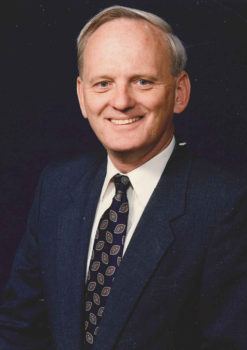
Sometimes just one phone call can change a person’s life. In Olson’s case, it happened twice.
As a naval officer based out of Charleston, South Carolina, Olson was on active duty from 1963 to 1967 and later achieved the rank of lieutenant commander in the Navy Reserve. He spent much of his military career on ships overseas. “I was constantly on the move,” he said, noting he was a bachelor at the time, making more money than he needed, and he thought about staying in the service. But he saw the family lives of his fellow officers – away from their spouses and children for months on end – and decided he wanted a more traditional family life. So the plan was to leave the Navy, return to Iowa and practice law.
But before he could embark on a law career, the phone rang. It was the CIA.
Apparently an agency “spotter” had recommended Olson for an interview. Spotters are people who’ve been vetted by the CIA and asked to identify others in their radius as good candidates for service; they are often professors. He has no idea who spotted him.
The agency was interested in Olson for a career in the National Clandestine Service. He said the screening process was beyond rigorous: “Incredibly intensive interviews, aptitude testing of every possible kind, physical fitness tests, foreign language testing, psychological screening, background investigations, a whole series of polygraph exams – it just went on forever.”
His proficiency in foreign languages surely weighed in his favor throughout his career – he knows six: French, Russian, German, Spanish, Swedish and Latin.
After he passed the initial interviews and testing, Olson was sent to the CIA’s undercover training base in Virginia, called “the farm.”
“I went to the farm and learned all about weapons, hand-to-hand combat, explosives, covert action, the whole thing,” he said. “Then of course the tradecraft that goes with being a spy – things like dead drops, car tosses and brush passes. It seemed unreal.”
He said today he and Meredith laugh, “that I left the Navy because I wanted a traditional family, and then joined the CIA.”
Spy Team
Olson met Meredith at the CIA, where she was already working, and they became a husband-and-wife spy team. “We enjoyed being able to go off on missions together and dedicating our lives to serving our country,” he said. Most of their more than three decades in the CIA were spent overseas; all three of their children were born in Paris. He became the agency’s chief of counterintelligence in 1991.

“It was a true double life,” he said, explaining that he did his cover job by day and spied at night. “There wasn’t much time left for anything else.”
And no one knew – not their kids, not their friends and family, not the aforementioned father-in-law.
The two operated around the world, first in Paris, then in Moscow where they spied on the Soviets. They were under constant surveillance by the KGB. “They had three shifts of KGB surveillance teams watching us around the clock,” Olson said.
The stakes were incredibly high.
“Our job was to handle courageous Russians who were secretly cooperating with the CIA and passing us their secrets on Russian soil,” Olson said. “They did it because they hated communism… it was life and death.”
Olson can give few specifics of his missions. However, he’s able to talk about when he climbed down through a manhole underneath Moscow to tap into top secret communications cables. “I had to break KGB surveillance,” he said, “it’s called ‘getting black.’
“It’s an art form, and quite often involves disguise, so I’d have to look like a Russian with Slavic features, dress appropriately, have Russian documentation.” He was on his own, no “Mission Impossible”–esque voice in his ear guiding him. “It’s really advisable not to get caught,” he said with a laugh.
The tapped line provided intelligence to the U.S. for five years until former CIA officer Edward Lee Howard, who defected to Russia in 1985, told the Soviets about it.
After their tour in Moscow, the family moved to Vienna, which during the Cold War was a “real battleground” in the intelligence wars, Olson said. He was asked by the CIA director to build a counterintelligence program there and to make life difficult for the Russians, which he did.
The Olsons’ next stop was Mexico City. Their main targets there were counterintelligence and counternarcotics. It was in Mexico that Meredith began her work as a volunteer at Mother Teresa’s Home for Abandoned Children.
The Second Big Phone Call
By the mid ’90s, the Olsons were considering retirement from the clandestine service.
Usually when spies retire, they go back to their normal lives without anyone ever knowing what they’d done. This was not the case for Jim Olson. The reason for that was President George H.W. Bush and Texas A&M.
“Meredith and I never wanted to come out from undercover,” Olson said. “Like most of our colleagues, we wanted to retire and never come clean, never reveal we’d been living a lie all those years.”
Then, once again, the phone rang.
It was 1997 and CIA Director George Tenet was on the line with a message from the 41st president.
Bush had chosen Texas A&M for his presidential library and museum and a school of government and public service bearing his name. He wanted Olson to come teach intelligence studies to Aggie grad students. Prior to his presidency, Bush was the CIA’s 11th director (1976-77).
Taking the job at A&M meant he and Meredith would have to reveal their secret life; CIA officers cannot be undercover on college campuses.
They decided to make the move, with Olson arriving when school officials were just beginning to build its programs. He and fellow Professor Chuck Hermann started from scratch and eventually created a selective program that attracts students from around the country who are interested in intelligence careers.
Olson said as rewarding as his prior CIA career was for him personally, “by far, the more fulfilling second career has been teaching at the Bush School,” he said, noting that the values of Bush and Texas A&M align with his values, especially the commitment to public service.
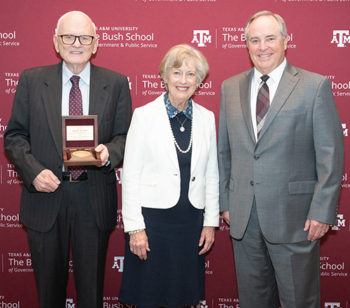
“I never could have worked in corporate America,” he said. “It’s fine for other people, but for me public service is my calling. It’s as President Bush said, ‘public service is a noble calling.'”
Olson said he tells students that if they’re interested in working in intelligence, they must do it for the right reasons. “If they think it’s about the travel, the money or thrills, they need to reevaluate,” he said. “What it’s really about is risking your life and the lives of those you care about, if necessary, to keep our nation safe.”
The Next Mission
These days, Olson can still be found at the Bush School meeting with students and helping out in whatever way he can.
He has written two books on his experiences in the CIA: “Fair Play: The Moral Dilemmas of Spying” (2006) and “To Catch a Spy: The Art of Counterintelligence” (2021).
The agency, of course, reviewed the books prior to publication. “It took longer for the CIA to review my books than it took for me to write them,” he said.
Aside from spending more time with his family, which now includes 11 grandchildren, Olson said he’s not sure what’s next, but hopes to stay involved with the Bush School in some capacity.
“Meredith and I have found our forever home at Texas A&M and in College Station,” he said. “We love it here and can’t imagine living anywhere else.” The two can be spotted regularly at Aggie athletic events.
Olson said he’s grateful to many at A&M for their support and encouragement including Hermann, Dean Mark Welsh, Professor Gregory Gause and Texas A&M Foundation President Tyson Voelkel.
He said he’s confident handing the reins of the Intelligence Studies Program to Professor Gregory Vogle, a former Marine and 30-year veteran of the CIA. Vogle headed the CIA’s Directorate of Operations, overseeing thousands of personnel in intelligence gathering and covert operations.
“It was an honor to teach the next generation of U.S. intelligence officers,” Olson noted. “It gives me a warm feeling to know that so many of our graduates are doing exciting and important work for the U.S. intelligence community. Public service is indescribably fulfilling. I wish I could do it all over again.”
Media contact: Lesley Henton, lshenton@tamu.edu
